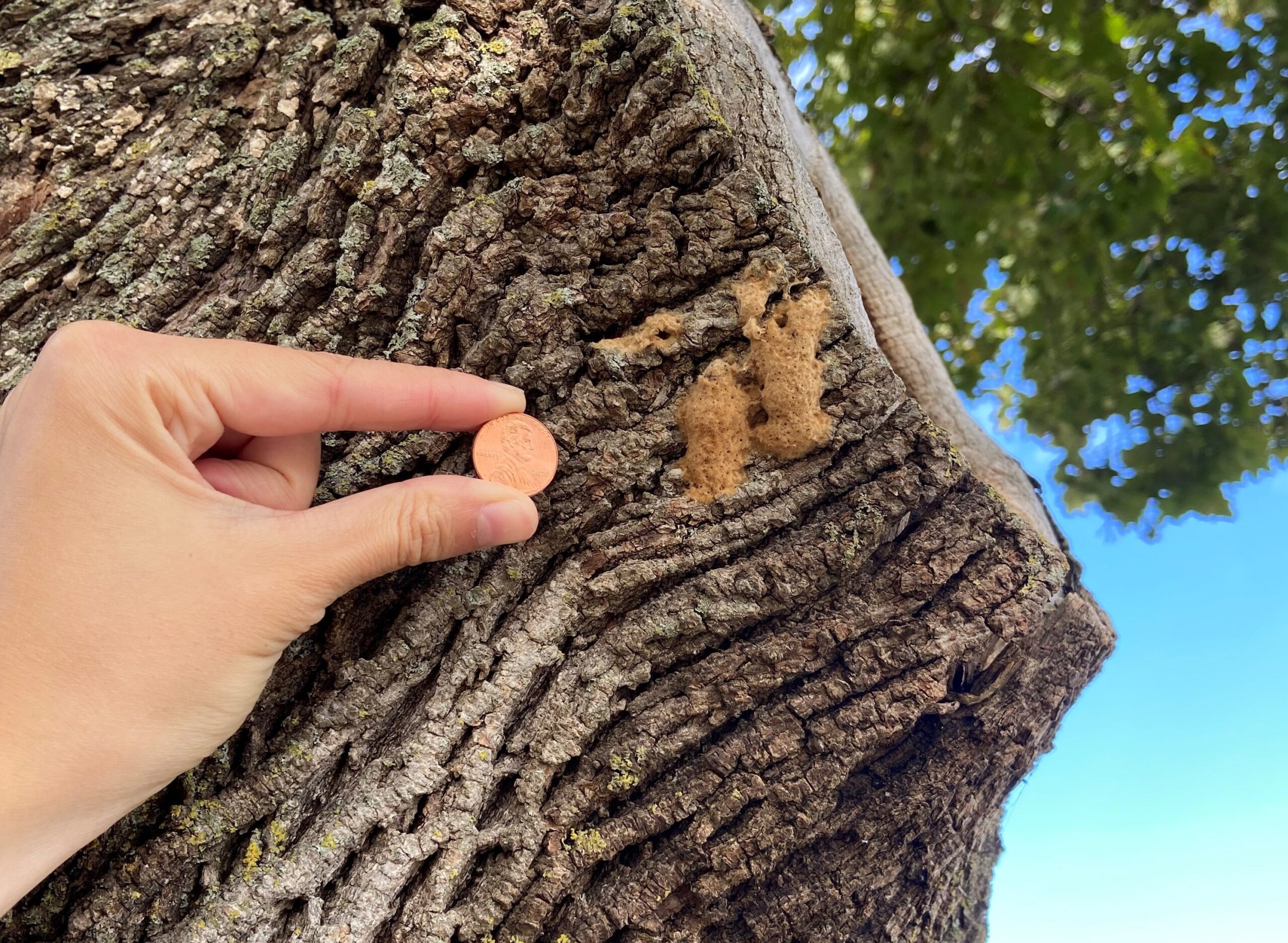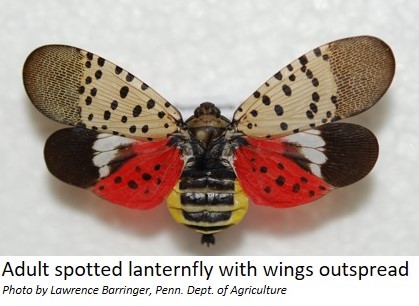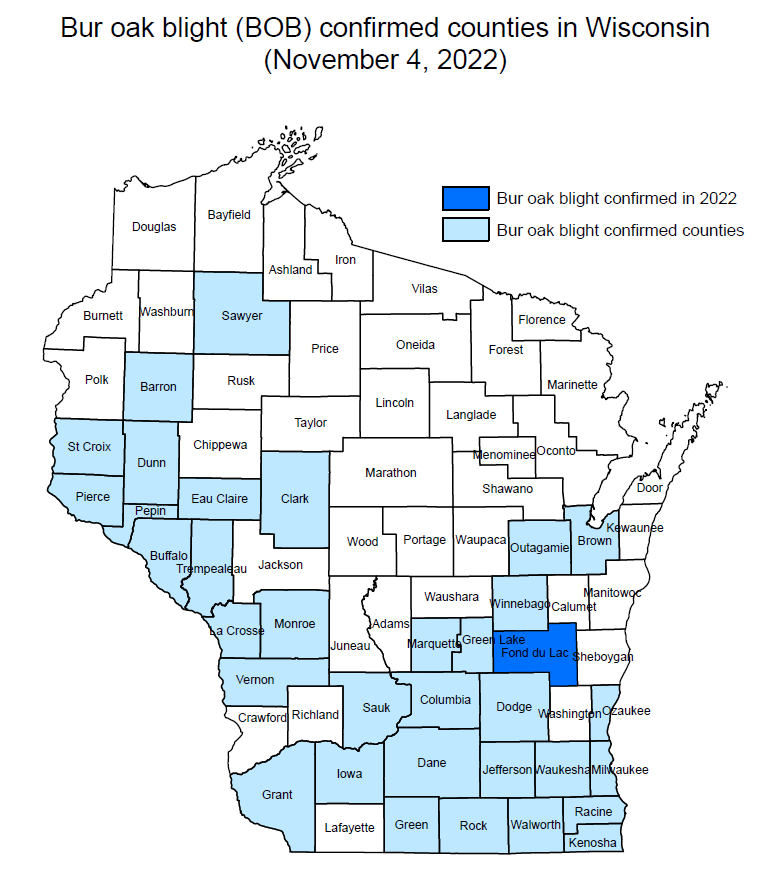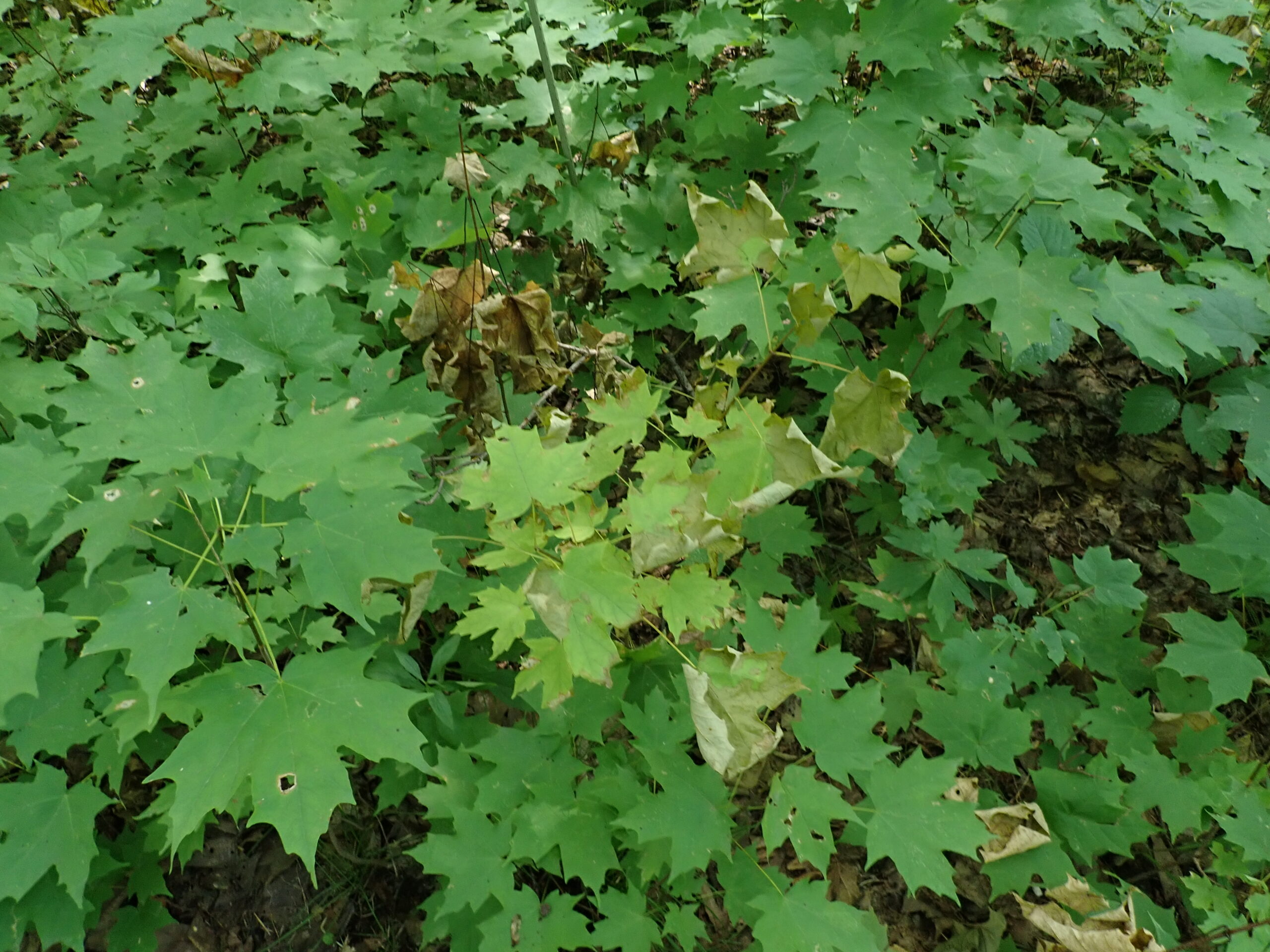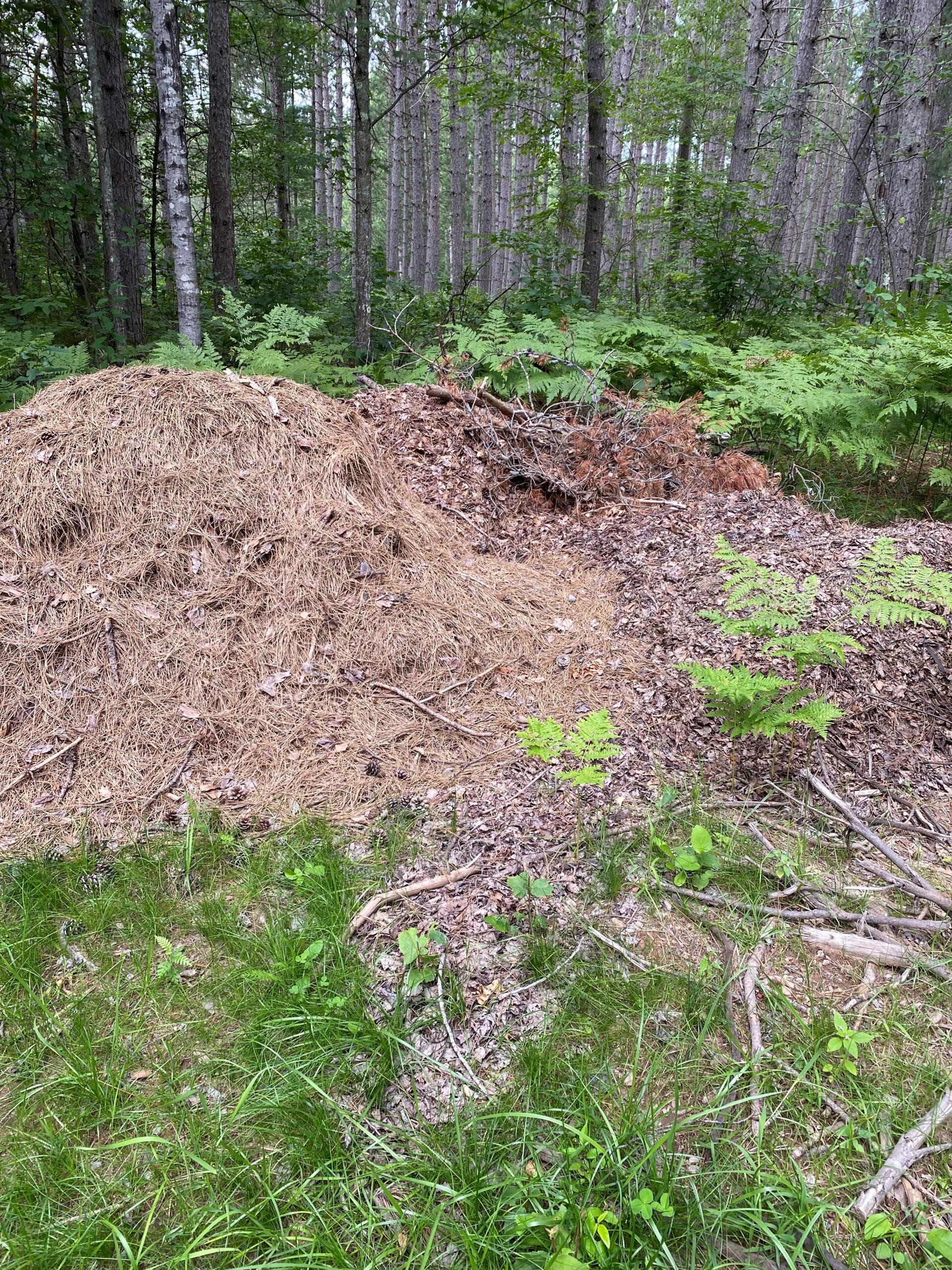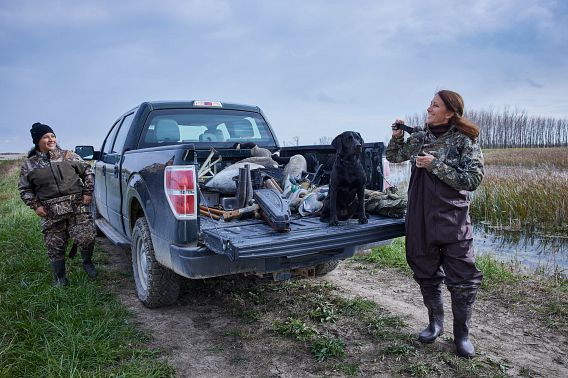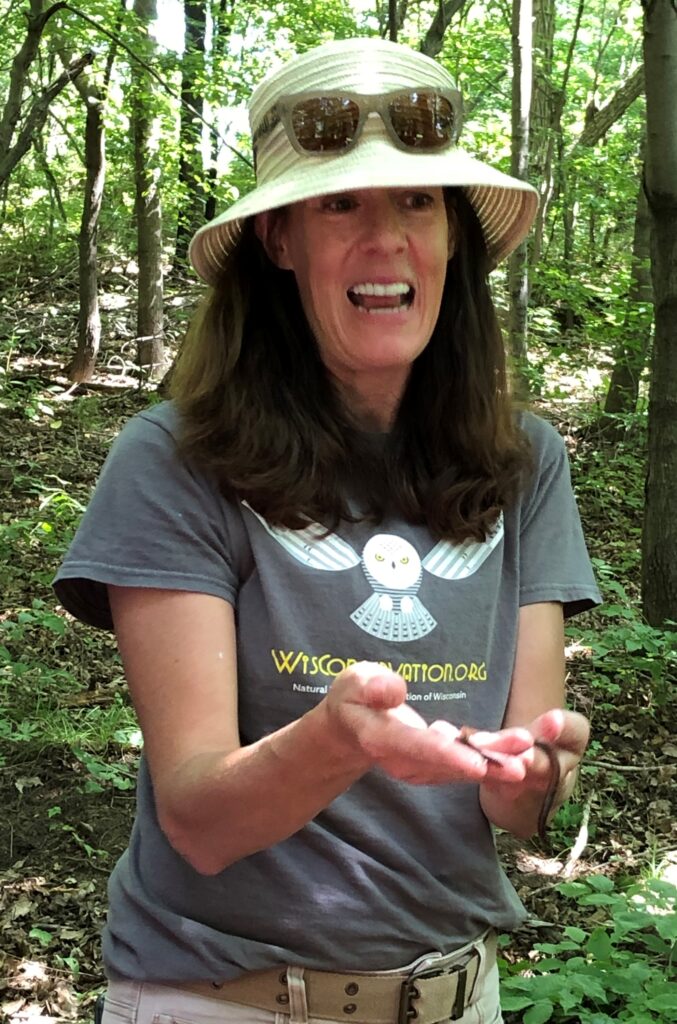By Bill McNee, DNR Forest Health Specialist, Oshkosh
bill.mcnee@wisconsin.gov or 920-360-0942
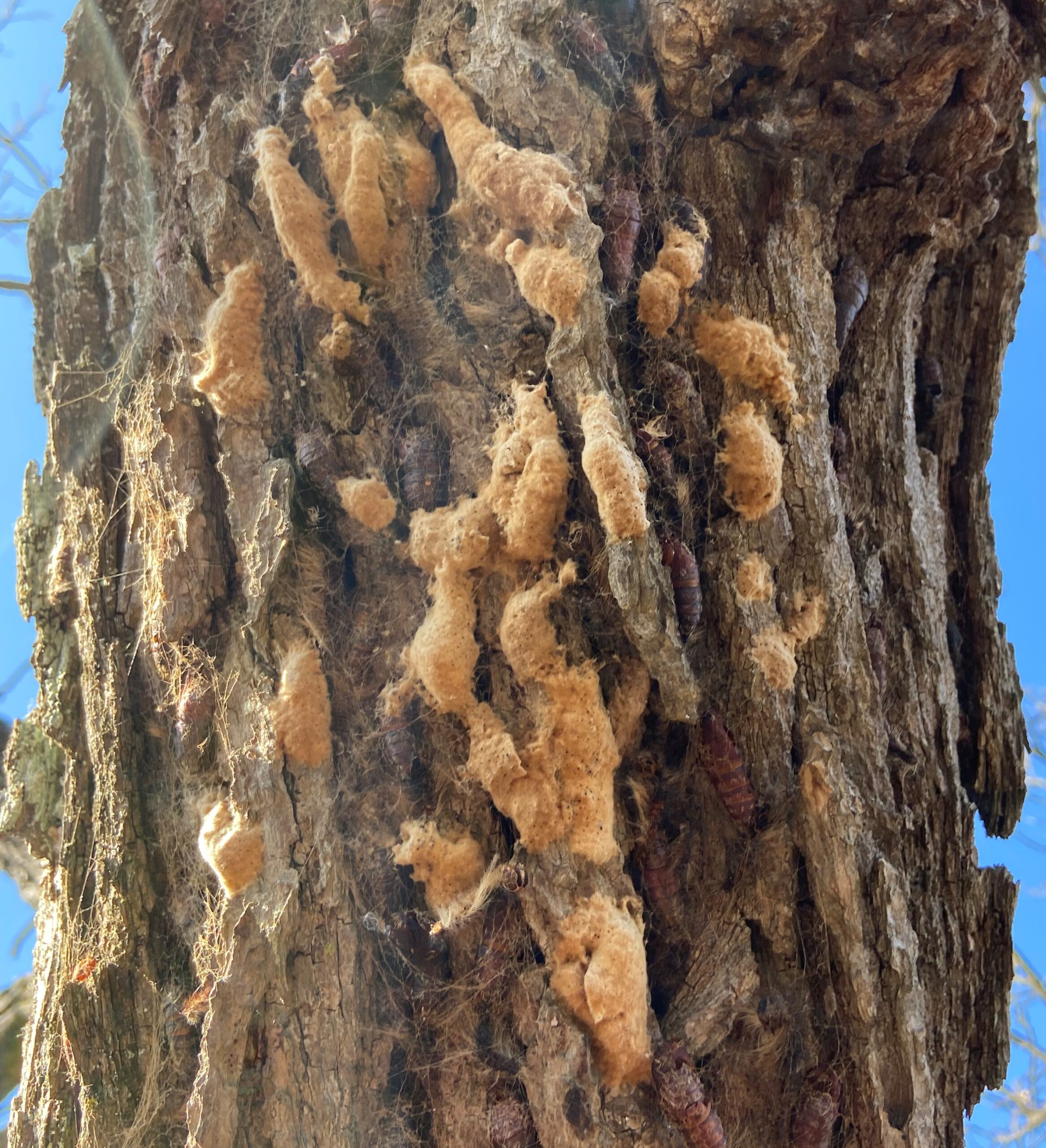
Numerous spongy moth egg masses on a bur oak in southern Waukesha County, November 2022. Photo: Bill McNee, Wisconsin DNR.
Forest managers planning silvicultural treatments in spongy moth susceptible stands (containing a large proportion of host species including oak, birch, aspen and basswood) are encouraged to annually conduct egg mass surveys in the few years prior to the scheduled treatment to predict if heavy defoliation is likely. The results may indicate that management activities should be altered or delayed until an outbreak has ended. At present, stands that were heavily defoliated in 2022 or are predicted to be heavily defoliated in 2023 are most likely to need a management delay or alteration.
It is recommended that a time interval be left between a stress agent (such as heavy defoliation or significant drought) and stand thinning so that the trees can recover from pre-existing stress before being subjected to additional stress. One growing season is a common interval for healthy stands that are not being subjected to drought or other stresses. A longer interval is suggested if the tree stress has been more severe or if the stand was not healthy and vigorously growing at the time of defoliation. The same interval is probably appropriate regardless of which stress agent is the pre-existing one. A protective aerial spray may prevent tree stress from defoliation but is usually not economically viable due to the high cost of an aerial treatment.
Continue reading “Harvest Timing Affected By Spongy Moth” →
